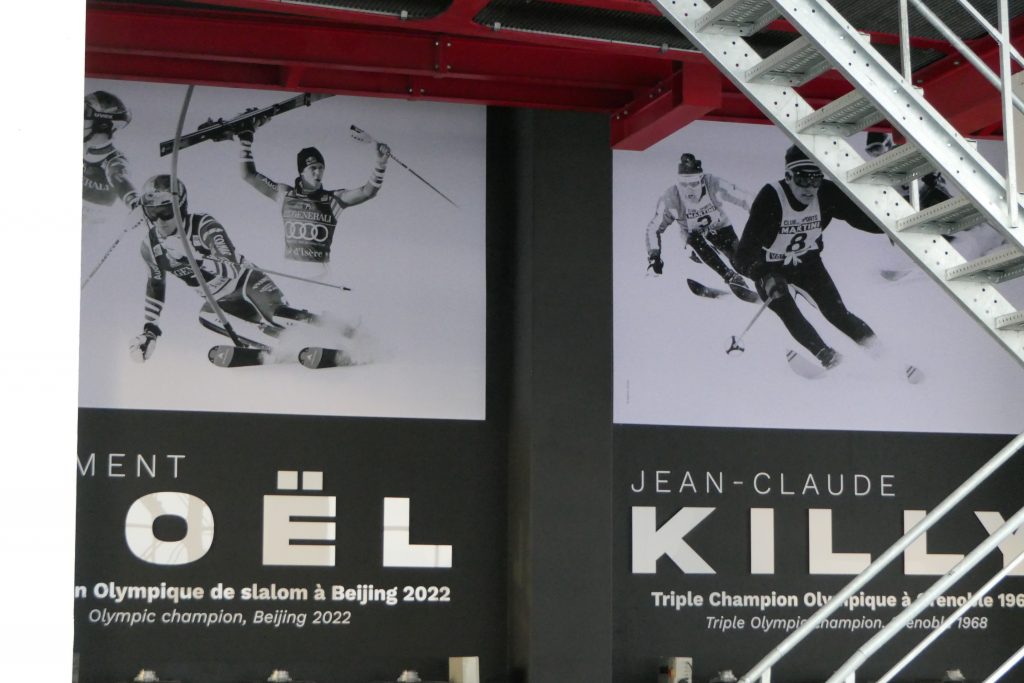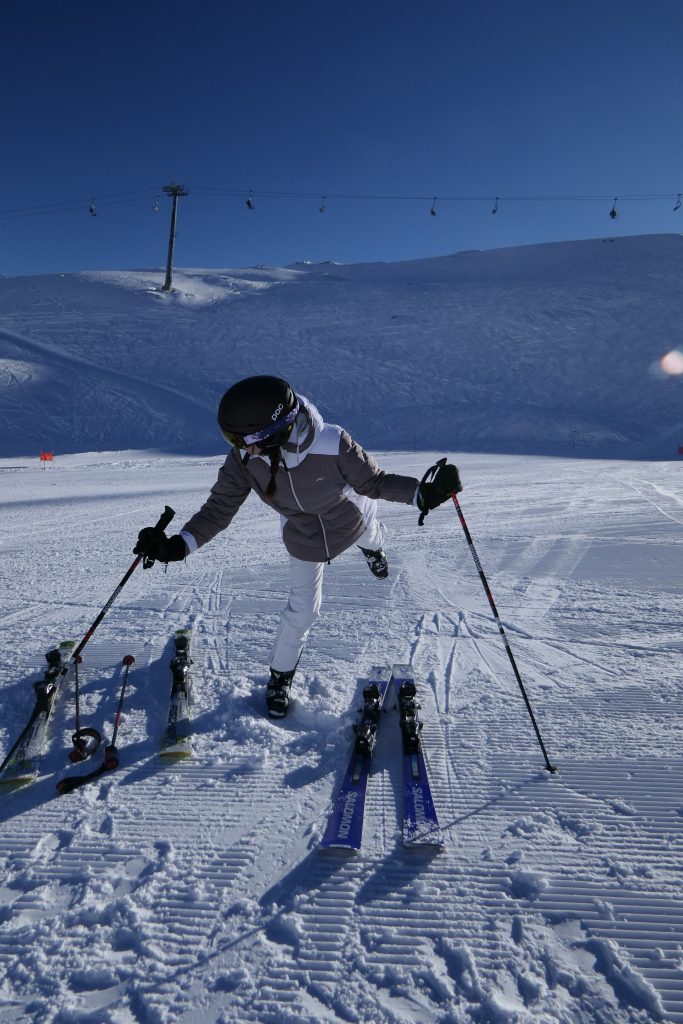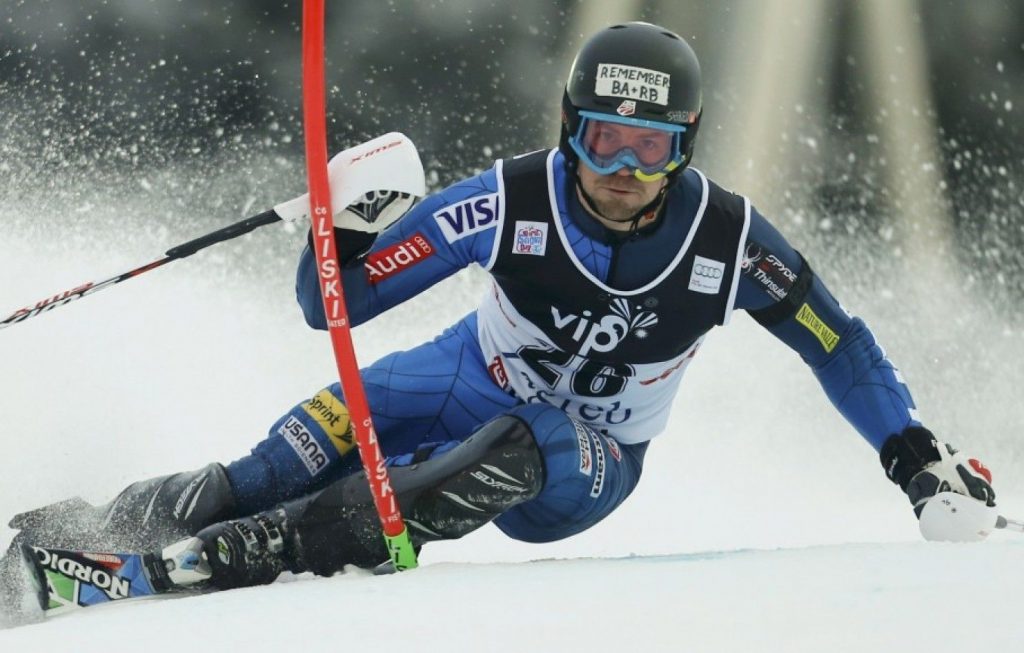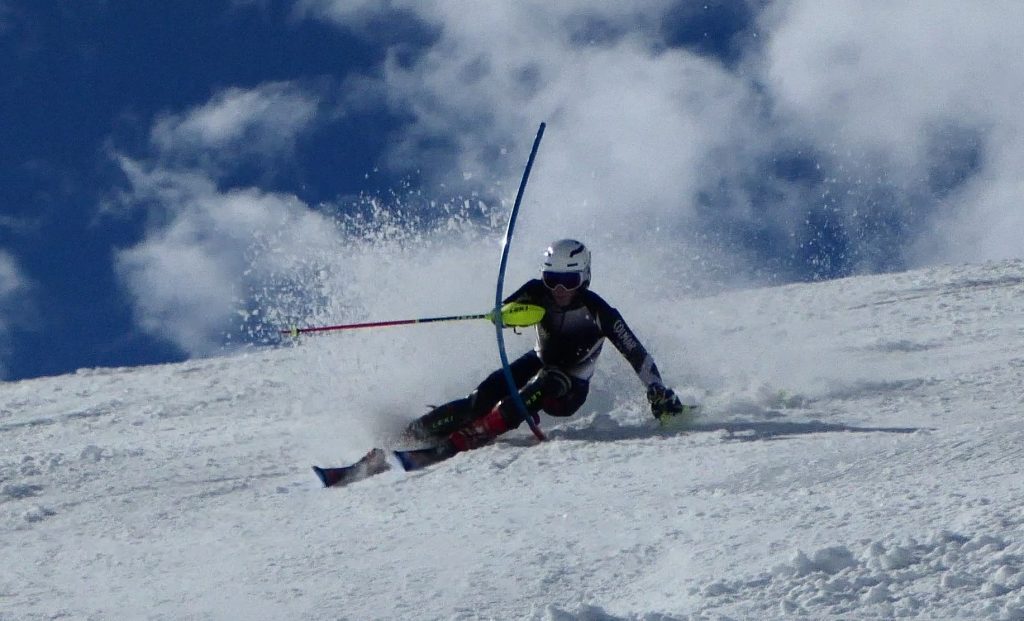Both Jenny and Nadia were very responsive to instruction. It took me a moment to realise that Jenny was overtaking me not because she wanted to but because she was not in full control of her speed. Once she realised that dynamics is not just for the start of a turn but is even more vigorously applied in the closure of a turn – aided by hip angulation – then she got it (and the consequential anxiety) well under control. Likewise, Nadia got her upper body rotation under control through a combination of understanding the skating action, the dynamics, the hip angulation and the launching of a turn from the uphill edge of the uphill ski – encouraging (in video) a pivoted entry into the turns and so making shorter turns.
The first module “Dynamic 1” just below is for reference only – useful if you have to stand your ground against “the most famous engineer in the world” trying to challenge your understanding!
I haven’t included my long modules on pivoting and side slipping because we didn’t have time to physically work on them – but if you get “using the uphill edge of the uphill ski to extend laterally downhill into the new turn” then that’s what matters most anyway. You can easily find the “Pivot” module in neighbouring posts in the blog if you are curious and have the time and inclination to tackle it.
Dynamics 1 – Being Out of Balance – to Be in Control
When you are making a turn on skis you can feel a force trying to throw you out of the turn – it’s called centrifugal force. You are then told that to make this turn happen you are balancing against this force.
The only snag here is that it’s all an illusion – none of it is real.
Centrifugal force has a few other names – “inertial force”, “pseudo force”, “fictitious force”.
When you, the skier, observe your own turn you are experiencing what’s called a “rotational frame of reference” and it is also confusingly called a “non inertial frame of reference“.
Yes we can calculate centrifugal force – but it’s not real – it’s just mathematics! (The magnitude of the centrifugal force F on an object of mass m at the distance r from the axis of a rotating frame of reference with angular velocity ω is: 
Real forces can be seen from the outside of the system as if you were a drone observing from high above. There’s no force pulling you outwards just a force from the ski deflecting you inwards away from a straight line. This is called an “inertial frame of reference” and it has only real forces – no fictitious “inertial forces”. This real force is called “centripetal force” (inwards – toward the centre) and it is accompanied with an acceleration. The acceleration is a change in velocity (vector) but it’s only a change of direction not speed. Acceleration is the physics of disequilibrium – being out of balance – the official term in mechanics being “dynamics”.
Dynamics 2 (Skis Parallel)
- Skis must be travelling forward – like a bicycle
- This is mainly about using the outside leg (start of new turn) to push the centre of mass into the centre of the new turn – for the whole duration of the turn
- There is no “balance” when skiing – dynamics is the physics of disequilibrium
- You are looking for stability from organised accelerations (ski technology!)
- Notice in the photos below the outside leg is essentially straight in a skating action (flexion for absorption and other purposes is primarily at the hip joint)
- The centre of mass goes down toward the snow – and to complete the turn it comes back up – like a motorbike in a turn
- There is no “Centrifugal Force” acting on the skier – only a deflection inward away from a straight line. This deflection is used to lift the skier up at the end of the turn – which involves “finishing” the turn – I.E. turning almost back up the hill.
- Remain square to the skis (follow the skis around the turn with your body) until you are really comfortable with movement of the centre of mass and clearly aware of moving it.
Model photos showing unambiguous dynamics…



Skating/Adductors
Skiing is just disguised skating. The main difference is the skis are wide and have two edges. When diverging the skis outwards at the tips into a skating stance the skis want to flatten on the snow and the stiff shaft of the ski boots will pull the knees outward. The adductor muscles need to be engaged to hold the skis on their inside edges. This is a pattern of muscle use – the adductors of both legs contracting – that should be maintained when skiing parallel. This is partly dependent on the skier’s morphology. If the femurs are naturally directed inwards less adductor use might be appropriate but if slightly bow legged there may be a need to consciously work the adductors.
Only when snowplough braking should the adductors be released to widen the spreading of the tails of the skis from the hip joints.

The other difference between skis and skates: – it’s just that skis bend and scribe arcs on the ground and are generally used on slopes not flat lakes. Skating actions are fundamental for a skier’s development because they involve independent leg action where only one leg at a time is really used. Although skiers can stand on two feet the body is oriented specifically on one hip joint at a time (when turning) and has to function as if standing on one leg. Skating exercises such as skating step turns are helpful in developing basic skills. Skating turns use diverging skis (opposite from snowplough) and incremental stepping of the centre of mass inward toward the turn centre. This is ideally the first sort of turning that any complete beginner should experience – on flat terrain
Everting the Feet
When the skis are parallel the feet still “diverge” (as if skating) inside the ski boot – each foot being turned outward (everted). This obviously isn’t visible. This is to combat the tendency to twist the foot inwards to”turn” the ski directly -a mistake which flattens the ski and causes loss of grip.

Ankle Flex (Anterior Tibialis Contraction)
One way to increase pressure on the ski fronts is to flex the ankle inside the ski boot – not by squashing the ankle but by lifting the forefoot toward the shin and creating shin pressure on the cuffs of the ski boots. The boots then act as a lever transmitting force to the ski fronts. Gripping on ice requires pressure on the ski fronts and is strongly aided by the (upward) flexed ankle. Turning power comes mainly from the ski fronts – pressure on the tails of a ski makes it travel straight ahead.
Contracting the shin muscle protects the knee joints.
Keeping the ankle flexed (upwards) protects the knee and helps keep pressure on the front of the ski boot – even while extending the leg.
Extending the (flexed) uphill leg in a turn transition/initiation also serves to protect the knee joint from excessive strain through the quadriceps as the turn progresses.
Body Management (Hip Angulation, Anticipation, Control of Rotation, Linked Short Turns)
Take a look at the two Olympic champion skiers in the photograph below.
Killy’s image from the 1960s has his chest facing downhill whereas Noel’s image from 2022 has his chest facing forward. What Killy is doing destroys your lower back and is probably why he never went on skis again after he stopped racing.

Protecting the Spine
- Hold the front of the pelvis up – aiming for “neutral pelvis”
- During the turn pull the outer hip backwards so that the ski doesn’t pull it in front of your ribs
- Look for a stretch between the ribs and hip joint
- Look for a reflex contraction of the lower abdominals – the postural reflex
- Keep the shoulders/chest following the skis (to some degree)
- Always “counter turn” the pelvis more than the chest/shoulders (It’s only the pelvis that should “face downhill”)
- Pulling the hip backwards also prevents both hip rotation and full upper body rotation
Source of Hip Angulation
The upper body needs to tilt forward over one hip joint – then rotate around it. This is in addition to pulling back the outside hip etc.
The body shape produced alters the location of the centre of mass enabling pressure on the ski fronts and also greater agility both into and out of turns – and pole planting if the skis are swinging laterally.
The hip angulation also provides flexion of the hip joint that gives absorption of shocks. Increased angulation also increases the edge angle of the skis to the snow and may alter the turn radius and grip.
Angulation when upright and pivoting has another function – when ANTICIPATING the next turn it is used to get the Centre of Mass out of the existing turn (by tilting the torso forward at the hip ) and letting the Centre of Mass move over the skis to plant the ski pole downhill for a strong, clear and definite support.

When the entire body inclines into the turn with hip angulation present this below is what it looks like.

Dynamics 4 (Advanced Angulation)
Creating “angulation” is exactly like dropping one cheek of your bottom onto a chair placed at the side of your body. This gives the impression of “facing downhill” in shorter turns – which is actually an effect not a cause or intention. The action is centred on a relaxation of the hip joint (outside leg) and a falling into the turn particularly in the second half of the turn . The turn initiation (short to medium radius) is with the skier’s upper body facing downhill – thrusting the upper body directly downhill while the skis travel across the hill.

Combining Dynamics and Pivot
- Dynamics depends of forward motion of the skis and lateral falling/pushing of the centre of mass
- Pivot depends on lateral motion of the skis – but always with the centre of mass being driven inward (toward the turn centre) modulated by the support of a pole plant
- The two can be combined – when there is both forward and lateral motion – making overall control of trajectory and speed totally under control of the skier
- In all cases there must be active adductor muscle use – and the feet must be “everted” i.e. turned outward inside the ski boots – diverging sightly (skating stance)
- The essential element to take from combining pivot and dynamics is to execute the turn transition from the uphill edge of the uphill ski – noting that the ski enters the new turn more easily than when on its inside edge and this also prevents stemming (and body rotation)
- Additionally with the transition between the two turns being made from the uphill edge it’s easy to switch into a very tight pivot when desired
Look at the skis in the two images below. The top image is with skis carving – the bottom image skis pivoting



